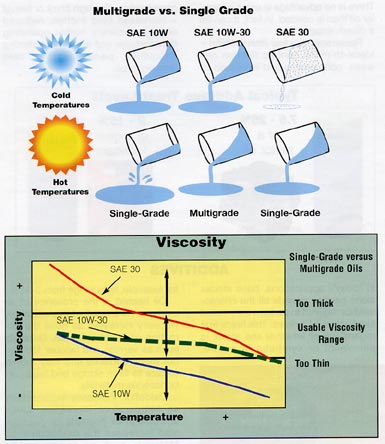How does multigrade oil work?
1 Answer
Multigrade oil contains special additives. They keep the viscosity of the oil almost constant as the temperature changes.
Explanation:
The viscosity of a liquid is its resistance to flow. High intermolecular forces between the molecules cause a high viscosity.
As the liquid warms up, the added kinetic energy overcomes some of the attractive forces. The viscosity decreases. Hot molasses flows more readily than cold molasses.
SAE 10W-30 is a multigrade oil. The diagram below compares its viscosity behaviour with that of single grade SAE 10W and SAE 30 oils.

Both SAE 10W and SAE 30 have large decreases in viscosity as the temperature increases.
SAE 30 is too viscous to use at low temperatures, and SAE 10W is not viscous enough at high temperatures.
SAE 10W-30 contains special polymer additives to keep the viscosity almost constant as the temperature changes.
At low temperatures, 10W-30 has the viscosity of 10W. As the engine heats up, the viscosity changes to that of SAE 30. Thus, one type of oil works in all temperatures.


